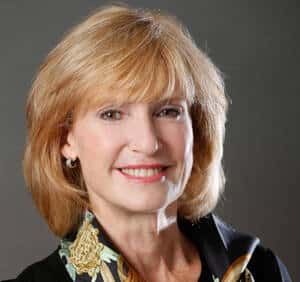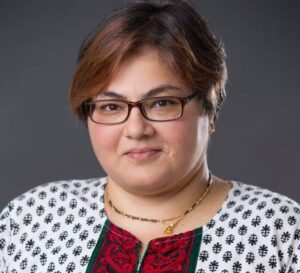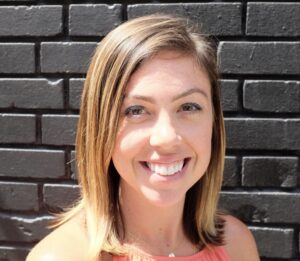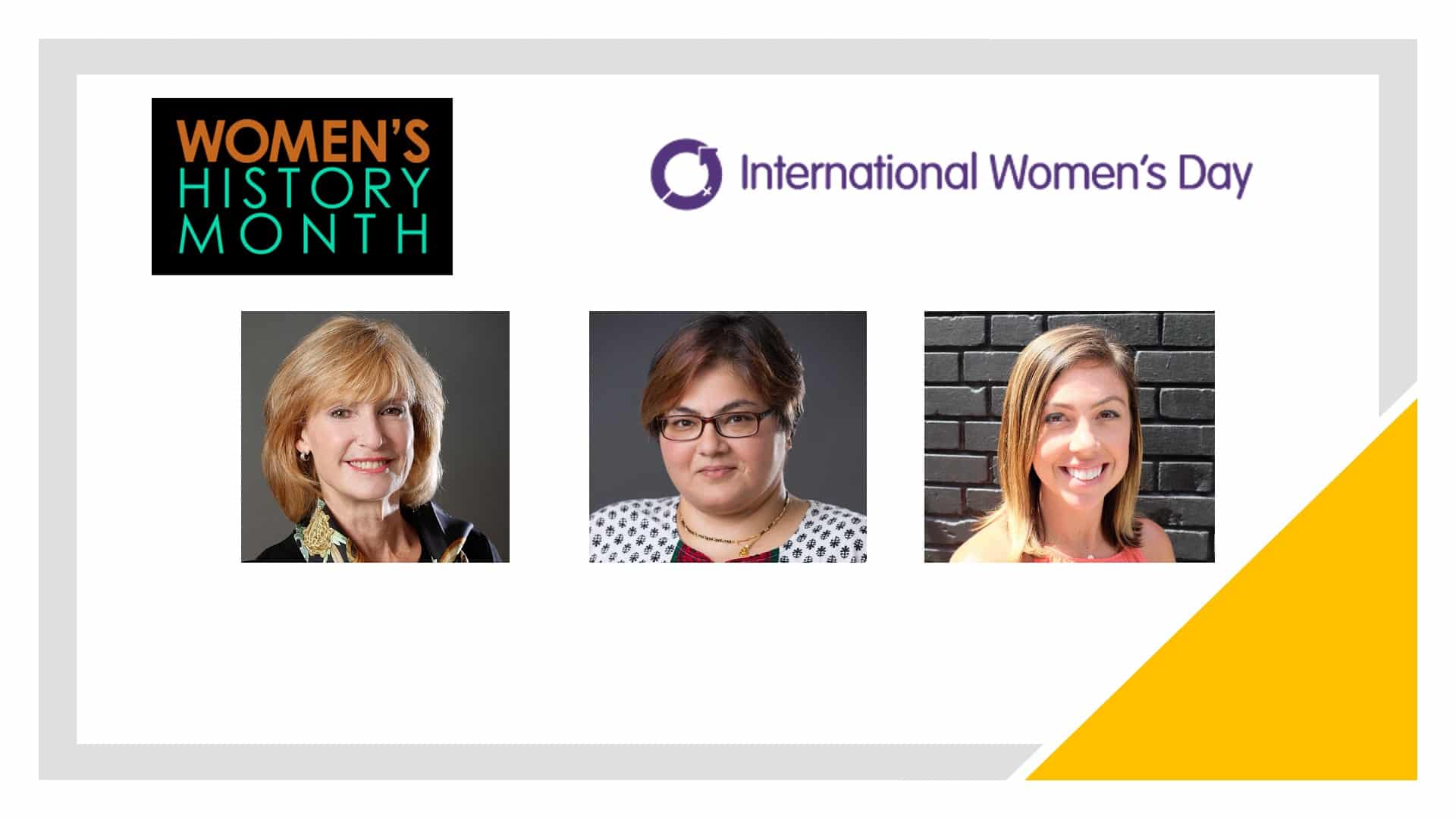Marked annually on March 8th, International Women’s Day is a global day celebrating the social, economic, cultural, and political achievements of women.
Since 1995, U.S. presidents have issued a series of annual proclamations designating the month of March as “Women’s History Month.” These proclamations celebrate the contributions women have made to the United States and recognize the specific achievements women have made over the course of American history in a variety of fields.
As part of Women’s History Month/International Women’s Day celebrations, the New York Genome Center (NYGC) honors the many women scientists and staff at the NYGC who continue to advance genomic science; read some of their stories below.

Carol Ashe
Chief Business Officer
Tell us about your current role at the NYGC.
As Chief Business Officer, I am responsible for Business Development (BD) at the NYGC. I am also delighted to now oversee the Development and Communications teams.
The BD team is responsible for identifying and negotiating revenue-generating business development opportunities for the NYGC, primarily with industry partners. These opportunities include research and clinical lab fee-for-service and collaborative projects. We attend many partnering meetings as ambassadors for the NYGC and meet with appropriate personnel from potential industry and disease foundation partners to instill interest in the NYGC’s capabilities and discuss potential ways of working together. Once a potential project has been identified, we set up meetings with appropriate NYGC personnel (e.g., Project Management, Bioinformatics, Methods Development, Technology Innovation Lab, Clinical Lab, faculty, etc.) to discuss project design and pricing. We are very grateful for the support that we get from our NYGC colleagues when we are trying to secure these projects. Once the project particulars are set, the BD team negotiates the relevant agreement (unless a NYGC template is used). The BD team is also responsible for evaluating intellectual property (IP) created by NYGC faculty and scientific staff for potential patent protection, and for overseeing the prosecution of these patent applications with the United States Patent and Trademark Office (USPTO) and foreign patent offices by outside patent counsel. We are also responsible for monetizing NYGC IP via outlicensing to industry partners, and negotiating the relevant agreements.
What, if any, barriers or challenges have you faced as a woman in your career? How have you overcome them? Do you see examples of progress?
I have faced many barriers and challenges as a woman, especially earlier in my career, and I’ll tell just a few stories here.
I started my career as a patent attorney at a major pharmaceutical company. I also had two children, both of whom were born early in my career. When I announced my first pregnancy at work, I was told that women should stay home while they were pregnant because their growing bellies were “offensive,” and that women should not work once their children were born until they were at least in elementary school. My boss (a woman with children!) and the head of the department were very clear in expressing how inconvenient my maternity leave was going to be for them and reminded me that I got six weeks of maternity leave and “not one day more.” I was called by work in the hospital the same day I delivered my first child to answer a work-related question. I had to use my vacation time for everything related to my children, including doctor’s appointments, child sick days, etc. Things did get better as time passed, and clearly things have evolved tremendously since then.
As a patent attorney based in Philadelphia, I was a member of the local patent law association whose monthly meetings were held at a private establishment that did not permit female members. The club earned money from the use of their facility by our association. However, when I attended those meetings, I was required to use the delivery entrance to enter the club and wind my way through the hidden parts of the club to the meeting room so that my face would never be seen by the members, while my male colleagues entered through the front door. It was humiliating (to say the least), but none of my male colleagues would speak up about it and the patent law association refused to change the meeting venue. The third time I attended an association meeting, I marched through the front door passing all of the shocked faces of the members and continued on to the meeting room while ignoring the trail of voices behind me asking me to stop. I am happy to report that the club changed the rules for the association’s meetings after that!
I eventually left the patent department to work exclusively on business development agreements. At agreement negotiations, I was usually the only female in the room. I was often asked (even by my own colleagues) to serve the refreshments and clean the room after the meeting, and/or to hang up or retrieve the coats. I confess that I did so for quite some time until I finally got the courage to either say “no” or ask my male colleagues to help. My sense is that this doesn’t happen very often anymore. At larger internal company meetings, I often raised my hand waiting for my turn to speak. When I finally was given the floor, I would immediately stop talking if a male colleague started talking on top of me. Eventually I learned to raise my voice and even stand up, if necessary, in order to be acknowledged and heard. I also learned to politely tell others to wait their turn and let me finish. However, I still catch myself raising my hand…
I worked very hard during my pharmaceutical company career and was rewarded by increasing levels of responsibilities and promotions. However, not everyone was impressed by my skills (or they were jealous), and I suffered from accusations that my promotions were not deserved but due only to “special” relationships with executive men at the company. While that was ridiculous, of course, it was also really painful, and there was no realistic way to appropriately confront the accusers or erase the perception from those choose to believe it. All of the other successful women at the company were the subject of similar rumors or else they were called the “B” word. Luckily, a group of us found and supported each other which was really a great help. While I am heartened to see more females in senior positions in the pharmaceutical industry and elsewhere, I am not convinced that this type of demeaning rumor-mongering against successful women has ceased.
At the NYGC, there have been and continue to be a large number of women in leadership and technical roles, which is really great. It was one of the reasons why I chose the NYGC over a competing opportunity. I am also really excited to watch how things evolve even further as the NYGC seriously undertakes its Diversity, Equity & Inclusion commitment.
What does Women’s History Month mean to you?
Highlighting women who have made a difference in history opens up the world of possibilities to young girls. Taking the time to celebrate these women also enables everyone to reflect on past mistakes and think about a better path forward.

Hemali Phatnani, PhD
Director, Center for Genomics of Neurodegenerative Disease, New York Genome Center
Assistant Professor of Neurological Sciences in the Department of Neurology, Division of Neuromuscular Medicine, Columbia University
Tell us about your current role at the NYGC.
I direct the Center for Genomics of Neurodegenerative Disease at the NYGC, which is dedicated to the study of neurodegenerative diseases such as ALS, dementia, Alzheimer’s disease, frontotemporal dementia, Parkinson’s disease, and Huntington’s disease. The CGND has established the NYGC ALS Consortium, involving clinicians, scientists, geneticists, computational biologists and industry partners, to provide a framework to apply clinical and functional genomics together with bioinformatics to study ALS disease mechanisms.
In January 2020, Dr. Phatnani was interviewed on the CUNY-TV show “Building NY Stories.” In the interview, Dr. Phatnani provides an overview of NYGC’s ALS research and also shares her journey to becoming scientist. Watch the full interview here.
I also hold a joint appointment at the Eleanor and Lou Gehrig ALS Center and the Center for Motor Neuron Biology and Disease at the Vagelos College of Physicians & Surgeons of Columbia University as Assistant Professor of Neurological Sciences in the Department of Neurology, in the Division of Neuromuscular Medicine. I also serve as a CTNI Scholar in the Columbia Translational Neuroscience Initiative (CTNI).
What, if any, barriers or challenges have you faced as a woman in your career? How have you overcome them? Do you see examples of progress?
I cannot recall any instances of overt hostility or discrimination — rather, my challenges mostly stem from internalized attitudes and societal projections — the kinds of behaviors and attitudes that are considered “acceptable” and “normal” for women. Overcoming these challenges begins with becoming aware of these attitudes and then consciously working to not let them become hindrances. With practice, you begin to realize that you can be authentic and effective at the same time!
What does Women’s History Month mean to you?
An opportunity to consciously reflect on and be grateful to the many, many, many examples of people who have paved the way for conversations such as these.
What advice would you give to your younger self?
Kindness matters; gratitude matters. Stay the course. Be bold enough to be yourself.

Catherine Reeves
Director, Sequencing Operations
Tell us about your current role at the NYGC.
As Director of Sequencing Operations, I have the pleasure of working closely with the Production Laboratory and Project Management department. Together, we plan and execute all of our research fee-for-service and collaborative sequencing projects at the NYGC. This includes onboarding new tech and methods hitting the market and coming out of our Sequencing Research and Technology Innovation labs. I also support our Business Development team and work closely with our Clinical Lab leadership on industry projects; collaborate with our Sponsored Research and Legal departments on new grants, contracts, and agreements; and work with our Finance team on pricing, invoicing, projections, and budget management. Every day is different and presents new challenges. I love getting to translate scientific aims into operational objectives while maintaining clear and open communication across departments as we continue to grow and expand our collaborations.
What, if any, barriers or challenges have you faced as a woman in your career? How have you overcome them? Do you see examples of progress?
I was very fortunate to begin my career in a lab full of strong women scientists, many of whom I’m still close with today. While unity and support were abundant within our lab team, there was a clear underlying message — there were few women in our field in highly technical roles and no women in senior scientific leadership. I was aware of the cap on my growth within the organization due to a combination of my gender, age, and lack of PhD. These women that trained me at the bench set a very high bar of performance expectations for this reason; it was unlikely I would be given opportunities simply based on my potential. I would need to prove my abilities and worth, likely working for some time at a higher level prior to being given the title and promotion. This has proved to be true on several occasions throughout my career. I attribute a lot of my growth and success to the lesson I learned from my first lab team, that as a woman in this field I needed to consistently outperform and do it with perfection. Which, of course, is exhausting and not sustainable, and why we talk about it here.
At NYGC, I’ve had a positive and supportive experience. For the first time professionally, I was given feedback that I wasn’t speaking up enough and that people wanted to hear more of what I had to say! I have yet to feel that my age and degree will hold me back here. We have a large number of women in leadership and technical roles. While there is still a lot of room for improvement diversifying from the top down, I am happy to see the work we’re doing at the NYGC to have those conversations and drive progress.
What does Women’s History Month mean to you?
Amplifying other women! Wear Your Voice magazine has a well-curated collection of pieces on 100 Years of White Feminism highlighting the harm caused by white feminism over the years, including the inequity and racism in the suffragette movement resulting in the 19th Amendment. Voter suppression is still a real and scary thing; staying informed on what’s happening in your area and nationally is critical as well as supporting groups like Fair Fight. If you are in a privileged position to give, For the Gworls Rent and Gender-Affirming Surgery Fund and Medical Relief Fund are great mutual aid donations to make this month to support the transgender community. And it’s always a great time to support and share women-owned businesses and restaurants (my current go-tos are Black Garnet Books, Satya+Sage, Cheese & Things, and Blondery).
What advice would you give to your younger self?
Don’t rush to chase your “perfect” life. There is no set road to follow or checklist for happiness; embrace failure and the unknown. It’s not giving up to quit things that are forced and inauthentic. No matter how hard you try, you’re still going to fail in unexpected ways and make mistakes — and that’s OK! You made it! Success is so much more than title and salary; do what makes you happy, and the rest of life sorts itself out.
